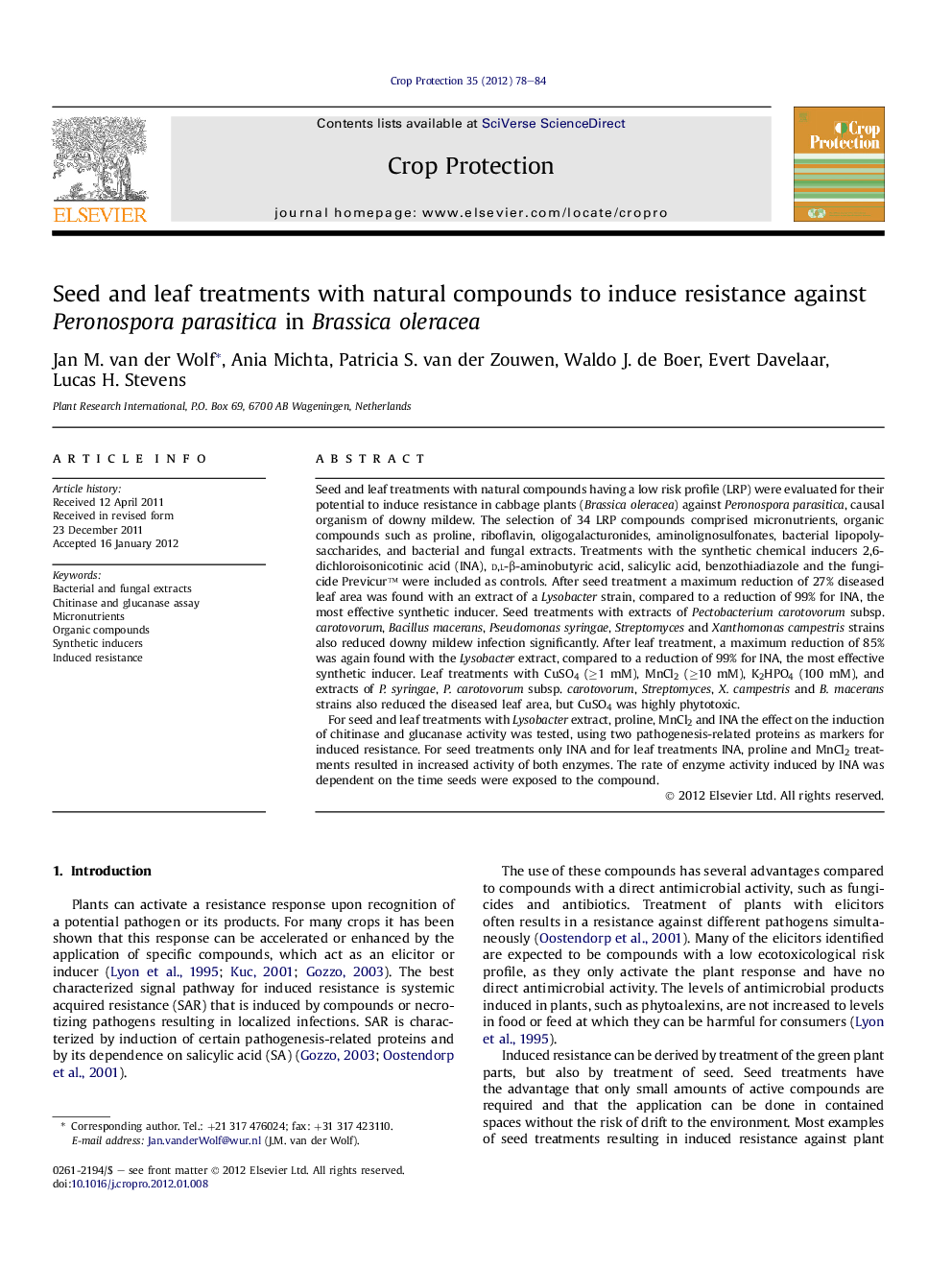| کد مقاله | کد نشریه | سال انتشار | مقاله انگلیسی | نسخه تمام متن |
|---|---|---|---|---|
| 4506521 | 1624352 | 2012 | 7 صفحه PDF | دانلود رایگان |

Seed and leaf treatments with natural compounds having a low risk profile (LRP) were evaluated for their potential to induce resistance in cabbage plants (Brassica oleracea) against Peronospora parasitica, causal organism of downy mildew. The selection of 34 LRP compounds comprised micronutrients, organic compounds such as proline, riboflavin, oligogalacturonides, aminolignosulfonates, bacterial lipopolysaccharides, and bacterial and fungal extracts. Treatments with the synthetic chemical inducers 2,6-dichloroisonicotinic acid (INA), d,l-β-aminobutyric acid, salicylic acid, benzothiadiazole and the fungicide Previcur™ were included as controls. After seed treatment a maximum reduction of 27% diseased leaf area was found with an extract of a Lysobacter strain, compared to a reduction of 99% for INA, the most effective synthetic inducer. Seed treatments with extracts of Pectobacterium carotovorum subsp. carotovorum, Bacillus macerans, Pseudomonas syringae, Streptomyces and Xanthomonas campestris strains also reduced downy mildew infection significantly. After leaf treatment, a maximum reduction of 85% was again found with the Lysobacter extract, compared to a reduction of 99% for INA, the most effective synthetic inducer. Leaf treatments with CuSO4 (≥1 mM), MnCl2 (≥10 mM), K2HPO4 (100 mM), and extracts of P. syringae, P. carotovorum subsp. carotovorum, Streptomyces, X. campestris and B. macerans strains also reduced the diseased leaf area, but CuSO4 was highly phytotoxic.For seed and leaf treatments with Lysobacter extract, proline, MnCl2 and INA the effect on the induction of chitinase and glucanase activity was tested, using two pathogenesis-related proteins as markers for induced resistance. For seed treatments only INA and for leaf treatments INA, proline and MnCl2 treatments resulted in increased activity of both enzymes. The rate of enzyme activity induced by INA was dependent on the time seeds were exposed to the compound.
► Seed treatments with isonicotinic acid protects Brassica seedlings from Peronospora infections.
► Treatments of seedlings with extracts of Lysobacter protects against Peronospora infections.
► Effect of seed treatments is dependent on the time of incubation with the elicitor.
Journal: Crop Protection - Volume 35, May 2012, Pages 78–84